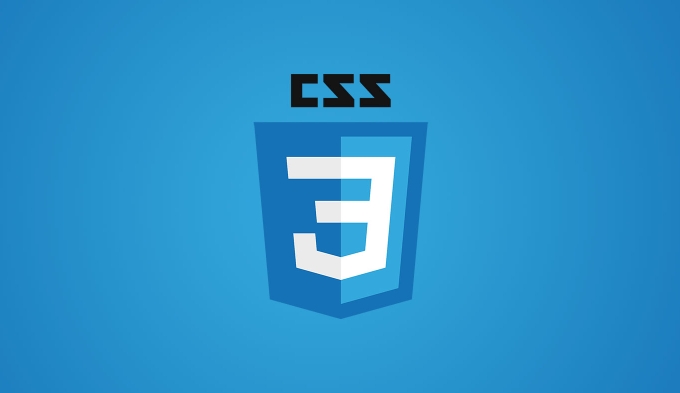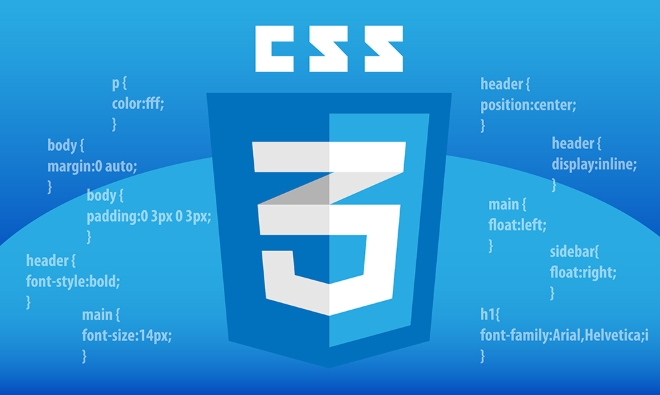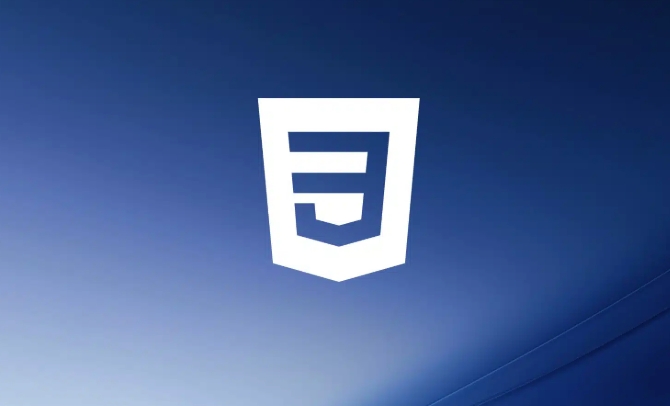The hover effect of CSS can enhance the interactive texture through a variety of techniques. 1. Use transition to achieve smooth animation, control the change of color, size, and position, and enhance the sense of nature; 2. Use pseudo-elements (::before or ::after) to create mask or scan effects to enrich visual feedback; 3. Use transform and filter to achieve dynamic effects such as image enlargement, contrast changes and shadows; 4. Pay attention to mobile compatibility issues, avoid relying on hover to display key information, and consider JavaScript or alternative interaction solutions.

The hover effect of CSS is not just a simple color change, but a little trick can make eye-catching interactions. The following methods can help you make the hover more advanced and more textured.

Smooth animation effect with transition
The most common problem with hover is that it “flashes through” and looks unnatural. The solution is to add transition to allow a process to change color, size and position.

.button {
background-color: #3498db;
transition: all 0.3s ease;
}
.button:hover {
background-color: #2980b9;
transform: scale(1.05);
}-
allmeans that all attributes are applied to transitions, and you can also specifybackground-colorortransform -
easeis an easing function, and there are also options such aslinear,ease-in-out, etc. - The time is generally controlled between 0.2s and 0.5s. It is more comfortable, and it will appear to be too slow.
Tips: When multiple attributes change at the same time, writing transitions separately is more controllable, such as:
transition: background-color 0.3s ease, transform 0.2s ease;
Combining pseudo-elements for masking or gradient effects
Is it a bit monotonous to just change the color when hover? Try to use ::before or ::after as a mask layer, and then use opacity or transform to achieve visual changes.

A common practice is to add a translucent color block to the button, which will appear when hover:
.card {
position: relative;
overflow: hidden;
}
.card::after {
content: '';
position: absolute;
top: 0; left: -100%;
width: 100%; height: 100%;
background: rgba(255, 255, 255, 0.3);
transition: left 0.3s ease;
}
.card:hover::after {
left: 100%;
}In this example, the pseudo-element is like a "sweeping" effect that slides from left to right across the card, increasing the dynamic feeling. You can also change it from top to bottom, zoom in and out, etc.
Multi-state combination: hover transform filter
Want a cooler effect? transform and filter can be combined to enhance visual feedback. For example, the picture is slightly enlarged and added a little contrast or shadow when hovering.
.image {
transition: all 0.3s ease;
filter: grayscale(100%);
transform: scale(1);
}
.image:hover {
transform: scale(1.05);
filter: grayscale(0%) contrast(110%);
box-shadow: 0 10px 20px rgba(0,0,0,0.2);
}In this way, once the mouse is put on, the picture becomes "live", which is much better than simply enlarging.
Pay attention to mobile compatibility issues
Hover may not work as expected on touch screen devices, for example, the hover style will be triggered only after a single click on iOS. If your product needs to consider the mobile phone, it is recommended:
- Try to avoid relying on hover to display key information
- Consider using JavaScript to control interaction state
- Or design alternatives for mobile devices (such as highlighting after tap)
Basically that's it. Although hover is simple, the details can greatly improve the interactiveness of the page.
The above is the detailed content of Advanced CSS hover effects tutorial. For more information, please follow other related articles on the PHP Chinese website!

Hot AI Tools

Undress AI Tool
Undress images for free

Undresser.AI Undress
AI-powered app for creating realistic nude photos

AI Clothes Remover
Online AI tool for removing clothes from photos.

Clothoff.io
AI clothes remover

Video Face Swap
Swap faces in any video effortlessly with our completely free AI face swap tool!

Hot Article

Hot Tools

Notepad++7.3.1
Easy-to-use and free code editor

SublimeText3 Chinese version
Chinese version, very easy to use

Zend Studio 13.0.1
Powerful PHP integrated development environment

Dreamweaver CS6
Visual web development tools

SublimeText3 Mac version
God-level code editing software (SublimeText3)

Hot Topics
 How can I include CSS only on some pages?
Jun 11, 2025 am 12:01 AM
How can I include CSS only on some pages?
Jun 11, 2025 am 12:01 AM
There are three ways to selectively include CSS on a specific page: 1. Inline CSS, suitable for pages that are not frequently accessed or require unique styles; 2. Load external CSS files using JavaScript conditions, suitable for situations where flexibility is required; 3. Containment on the server side, suitable for scenarios using server-side languages. This approach can optimize website performance and maintainability, but requires balance of modularity and performance.
 Flexbox vs Grid: Understanding the Key Differences in CSS Layout
Jun 10, 2025 am 12:03 AM
Flexbox vs Grid: Understanding the Key Differences in CSS Layout
Jun 10, 2025 am 12:03 AM
Flexboxisidealforone-dimensionallayouts,whileGridsuitstwo-dimensional,complexlayouts.UseFlexboxforaligningitemsinasingleaxisandGridforprecisecontroloverrowsandcolumnsinintricatedesigns.
 Creating an Auto-Closing Notification With an HTML Popover
Jun 10, 2025 am 09:45 AM
Creating an Auto-Closing Notification With an HTML Popover
Jun 10, 2025 am 09:45 AM
The HTML popover attribute transforms elements into top-layer elements that can be opened and closed with a button or JavaScript. Popovers can be dismissed a number of ways, but there is no option to auto-close them. Preethi has a technique you can u
 What is 'render-blocking CSS'?
Jun 24, 2025 am 12:42 AM
What is 'render-blocking CSS'?
Jun 24, 2025 am 12:42 AM
CSS blocks page rendering because browsers view inline and external CSS as key resources by default, especially with imported stylesheets, header large amounts of inline CSS, and unoptimized media query styles. 1. Extract critical CSS and embed it into HTML; 2. Delay loading non-critical CSS through JavaScript; 3. Use media attributes to optimize loading such as print styles; 4. Compress and merge CSS to reduce requests. It is recommended to use tools to extract key CSS, combine rel="preload" asynchronous loading, and use media delayed loading reasonably to avoid excessive splitting and complex script control.
 How to use Lotties in Figma
Jun 14, 2025 am 10:17 AM
How to use Lotties in Figma
Jun 14, 2025 am 10:17 AM
In the following tutorial, I will show you how to create Lottie animations in Figma. We'll use two colorful designs to exmplify how you can animate in Figma, and then I'll show you how to go from Figma to Lottie animations. All you need is a free Fig
 Breaking Boundaries: Building a Tangram Puzzle With (S)CSS
Jun 13, 2025 am 11:33 AM
Breaking Boundaries: Building a Tangram Puzzle With (S)CSS
Jun 13, 2025 am 11:33 AM
We put it to the test and it turns out Sass can replace JavaScript, at least when it comes to low-level logic and puzzle behavior. With nothing but maps, mixins, functions, and a whole lot of math, we managed to bring our Tangram puzzle to life, no J
 External vs. Internal CSS: What's the Best Approach?
Jun 20, 2025 am 12:45 AM
External vs. Internal CSS: What's the Best Approach?
Jun 20, 2025 am 12:45 AM
ThebestapproachforCSSdependsontheproject'sspecificneeds.Forlargerprojects,externalCSSisbetterduetomaintainabilityandreusability;forsmallerprojectsorsingle-pageapplications,internalCSSmightbemoresuitable.It'scrucialtobalanceprojectsize,performanceneed
 Does my CSS must be on lower case?
Jun 19, 2025 am 12:29 AM
Does my CSS must be on lower case?
Jun 19, 2025 am 12:29 AM
No,CSSdoesnothavetobeinlowercase.However,usinglowercaseisrecommendedfor:1)Consistencyandreadability,2)Avoidingerrorsinrelatedtechnologies,3)Potentialperformancebenefits,and4)Improvedcollaborationwithinteams.






